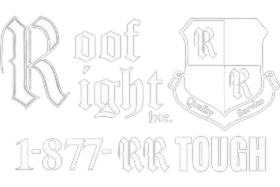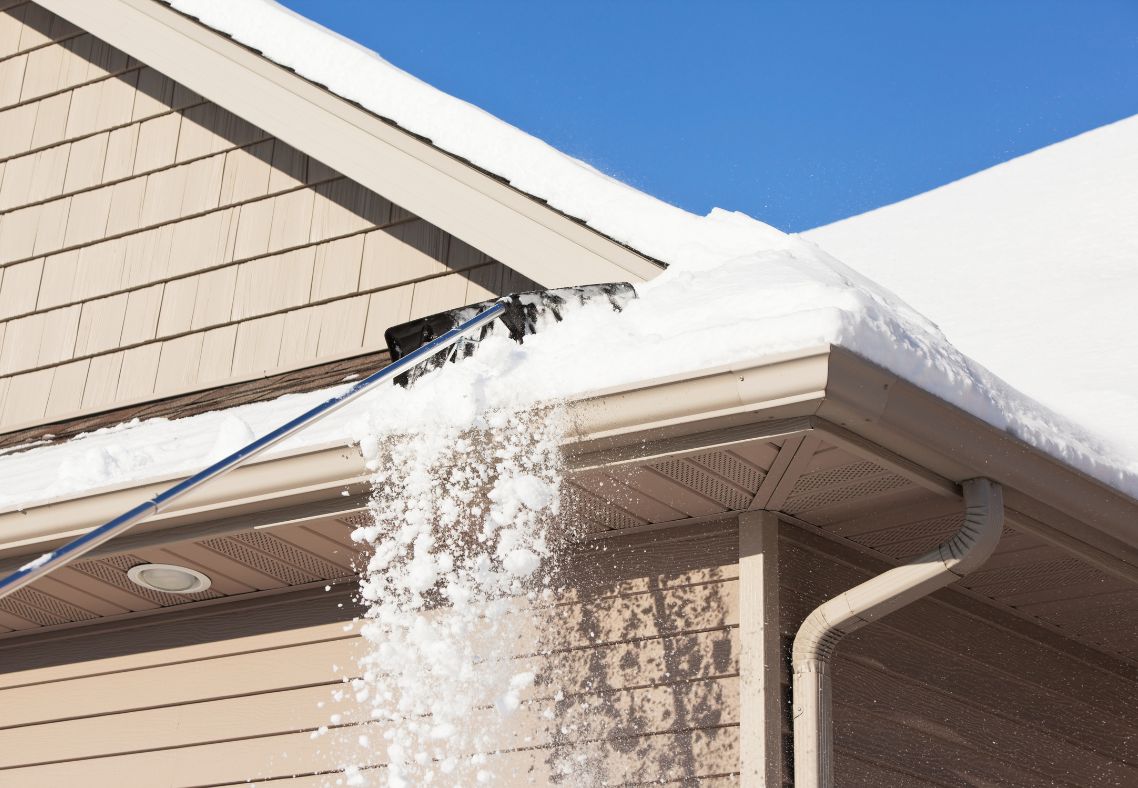How Can Melting Snow Cause Roof Leaks To Your Home?
Roof Right: Exterior Home Remodeling Specialists in Maryland Contact UsSchedule A Free EstimateWinter in Maryland brings its fair share of snow, ice, and cold temperatures. While a snow-covered roof may look picturesque, it can also present hidden dangers that many homeowners overlook. As temperatures fluctuate, melting snow can lead to roof leaks, which, if not addressed promptly, can cause significant damage to your home. Understanding how snowmelt leads to roof leaks is crucial for preventing costly repairs and maintaining the structural integrity of your home. Maryland homeowners are no strangers to fluctuating winter weather. A snowstorm one day can be followed by a warm front the next, causing rapid melting and potential issues for your roof. If your roof is not properly maintained, melting snow can create leaks that result in water damage, mold growth, and even structural deterioration. In this article, we’ll explore how melting snow can cause roof leaks and what you can do to protect your home from winter-related roofing issues.
How Can Melting Snow Cause Roof Leaks To Your Home?
How Does Melting Snow Lead to Roof Leaks?
While snow itself doesn’t immediately harm your roof, the melting and refreezing process can create conditions that lead to leaks. Below are some of the most common ways melting snow can impact your roof and home.
Ice Dams and Blocked Gutters
One of the leading causes of roof leaks from melting snow is ice dam formation. Ice dams occur when heat from your attic or home causes the snow on your roof to melt, allowing water to trickle down toward the eaves. Since the eaves of your roof are colder than the upper portions, the water refreezes upon reaching them, forming a thick barrier of ice. As more snow melts and attempts to drain off the roof, the ice dam prevents it from flowing properly. Instead, the trapped water pools behind the ice dam and can seep under shingles, making its way into your attic or down your walls. This process can lead to significant water damage inside your home, including mold growth and compromised insulation. Blocked gutters exacerbate this issue by preventing proper drainage. When snowmelt cannot flow freely through your gutter system, it overflows and spills onto the exterior walls of your home, potentially leading to leaks, foundation damage, and even basement flooding.
Roof Vent and Flashing Leaks
Your roof is equipped with vents, flashing, and other penetrations to allow for airflow and accommodate features like chimneys and skylights. However, these areas can be vulnerable to leaks when melting snow gets into small gaps and cracks. Flashing is designed to create a watertight seal around roof penetrations, but if it becomes damaged or deteriorates over time, melting snow can seep through, causing leaks. Similarly, roof vents that are improperly sealed or have aged may allow water infiltration, leading to moisture buildup inside your attic.
Saturated Roof Decking
Another common issue caused by melting snow is roof decking saturation. Your roof decking, which forms the structural foundation beneath the shingles, can absorb excess moisture if it is not adequately protected. Over time, prolonged exposure to water weakens the decking, making it susceptible to rot, mold growth, and even structural failure. If your roof has missing or damaged shingles, the underlying layers of your roof become even more vulnerable to water intrusion. Once the snow melts, water can seep into exposed areas, causing significant damage to the decking and even the interior of your home.
Weak or Compromised Roofing Materials
Roofs that are nearing the end of their lifespan or have been previously damaged are at a greater risk for leaks caused by melting snow. Shingles that are cracked, curled, or missing create entry points for water, allowing it to penetrate deep into your roofing system. Additionally, older roofing materials that have been repeatedly exposed to Maryland’s harsh winters may have weakened seals, making them more susceptible to leaks. If your roof is over 20 years old or has visible signs of wear and tear, it’s important to have it inspected before winter to ensure it can handle heavy snowfall and melting conditions.
Poor Attic Insulation and Ventilation
Proper attic insulation and ventilation play a crucial role in preventing roof leaks caused by melting snow. When your attic is poorly insulated, warm air from your home rises and heats the roof deck, causing snow to melt prematurely. This contributes to the formation of ice dams, which, as mentioned earlier, can lead to water intrusion and leaks. Similarly, inadequate ventilation traps heat and moisture in the attic, creating condensation that can damage your roofing materials and lead to mold growth. Ensuring your attic has sufficient insulation and proper airflow can help regulate roof temperatures and prevent winter-related roofing issues.
How to Prevent Roof Leaks from Melting Snow
While roof leaks caused by melting snow can be a serious problem, there are several preventative measures you can take to protect your home.
Keep Gutters Clean and Clear
One of the most effective ways to prevent ice dams and snow-related leaks is to ensure your gutters and downspouts are free from debris. Clearing leaves, twigs, and dirt from your gutters before winter helps maintain proper water flow, reducing the risk of overflow and ice buildup. Installing gutter guards can also help prevent blockages, ensuring melted snow drains efficiently and does not back up onto your roof.
Improve Attic Insulation and Ventilation
Proper attic insulation and ventilation are key to preventing premature snowmelt and ice dam formation. Adding insulation to your attic floor helps keep warm air from escaping and heating your roof, while a well-ventilated attic allows excess heat and moisture to escape, reducing the risk of condensation and ice buildup. If you’re unsure whether your attic is adequately insulated, a professional roofing contractor can perform an assessment and recommend necessary improvements.
Schedule Regular Roof Inspections
Routine roof inspections can help identify potential vulnerabilities before they turn into costly leaks. A professional roofing contractor can assess your roof for signs of wear and tear, damaged flashing, or missing shingles and make the necessary repairs before winter arrives. Scheduling an inspection in the fall allows you to address any issues before snow accumulation begins, giving you peace of mind throughout the colder months.
Remove Excess Snow from Your Roof
If your area experiences heavy snowfall, consider using a roof rake to remove excess snow from your roof’s edge. This can help prevent ice dams from forming and reduce the overall weight on your roof. However, if you are uncomfortable performing this task or if your roof is steep, it’s best to hire a professional to remove the snow safely.
Repair or Replace Damaged Roofing Materials
If your roof has damaged or aging shingles, replacing them before winter can prevent leaks from occurring. Addressing small issues early on can save you from expensive repairs later, especially when dealing with Maryland’s unpredictable winter weather.
Contact Roof Right For Roof Leak Repair Services In Maryland
Don’t let melting snow lead to costly roof repairs this winter. If you’ve noticed signs of roof leaks, ice dams, or moisture buildup in your attic, it’s essential to act fast to prevent further damage. At Roof Right, we specialize in winter roof inspections, leak repairs, and full roof replacements to keep your home protected year-round. Our experienced team understands the unique challenges that Maryland homeowners face during the winter months. Whether you need emergency leak repair, ice dam removal, or a full roof inspection, we’re here to help. Don’t wait until a small leak turns into a major problem. Contact Roof Right today to schedule your roofing service and ensure your home stays safe and dry this winter!
Areas We Serve
If you're looking for a roof contractor in Maryland, give Roof Right a call today at (410)-374-5923 to schedule an appointment!
Carroll County
Howard County
Clarksville, Columbia, Elkridge, Ellicott City, Fulton, Jessup, Laurel, Woodstock
Montgomery County
Baltimore County
Baldwin, Bradshaw, Carney, Cockeysville, Glen Arm, Hunt Valley, Jacksonville, Kingsville, Lutherville, Nottingham, Overlea, Owings Mills, Parkton, Parkville, Perry Hall, Phoenix, Pikesville, Reisterstown, Sparks, Timonium, Towson, White Marsh

